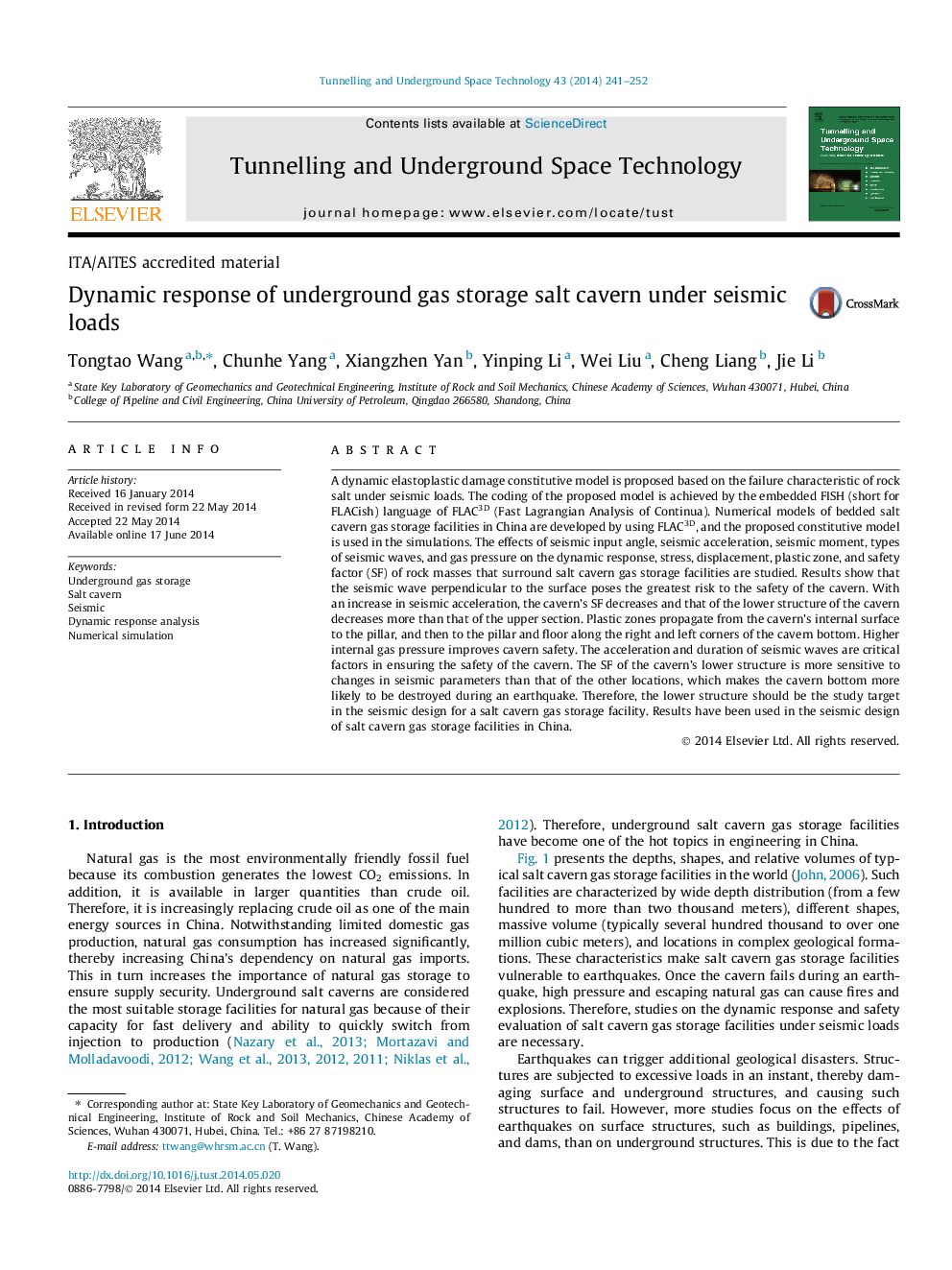| کد مقاله | کد نشریه | سال انتشار | مقاله انگلیسی | نسخه تمام متن |
|---|---|---|---|---|
| 311851 | 534146 | 2014 | 12 صفحه PDF | دانلود رایگان |
• A dynamic elasto-plastic damage constitutive model is proposed.
• Numerical models of salt cavern gas storages in China are established.
• Effects of different factors on the dynamic response of cavern are studied.
• Acceleration and lasting time are the key factors to the cavern safety.
• Cavern bottom is more likely destroyed than the cavern roof in the earthquake.
A dynamic elastoplastic damage constitutive model is proposed based on the failure characteristic of rock salt under seismic loads. The coding of the proposed model is achieved by the embedded FISH (short for FLACish) language of FLAC3D (Fast Lagrangian Analysis of Continua). Numerical models of bedded salt cavern gas storage facilities in China are developed by using FLAC3D, and the proposed constitutive model is used in the simulations. The effects of seismic input angle, seismic acceleration, seismic moment, types of seismic waves, and gas pressure on the dynamic response, stress, displacement, plastic zone, and safety factor (SF) of rock masses that surround salt cavern gas storage facilities are studied. Results show that the seismic wave perpendicular to the surface poses the greatest risk to the safety of the cavern. With an increase in seismic acceleration, the cavern’s SF decreases and that of the lower structure of the cavern decreases more than that of the upper section. Plastic zones propagate from the cavern’s internal surface to the pillar, and then to the pillar and floor along the right and left corners of the cavern bottom. Higher internal gas pressure improves cavern safety. The acceleration and duration of seismic waves are critical factors in ensuring the safety of the cavern. The SF of the cavern’s lower structure is more sensitive to changes in seismic parameters than that of the other locations, which makes the cavern bottom more likely to be destroyed during an earthquake. Therefore, the lower structure should be the study target in the seismic design for a salt cavern gas storage facility. Results have been used in the seismic design of salt cavern gas storage facilities in China.
Journal: Tunnelling and Underground Space Technology - Volume 43, July 2014, Pages 241–252
